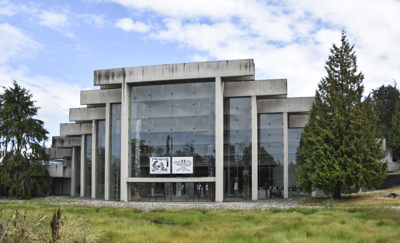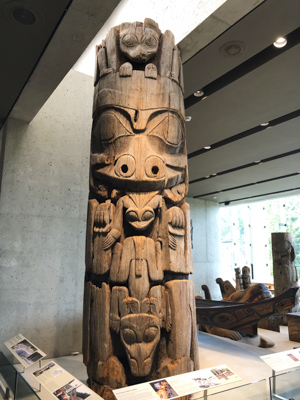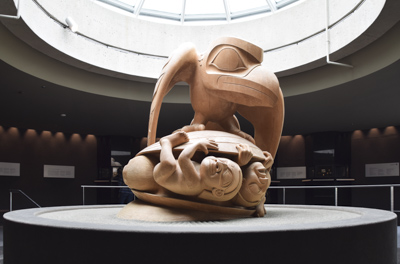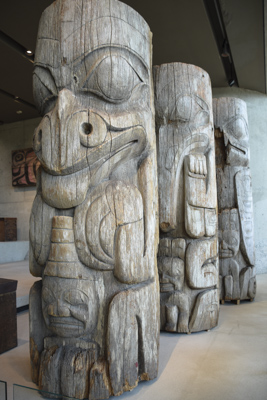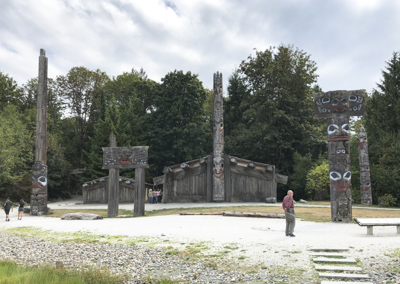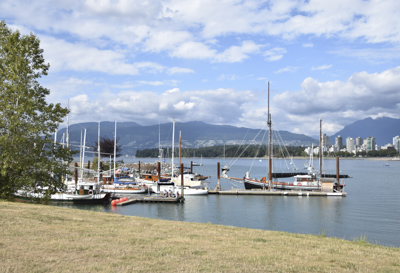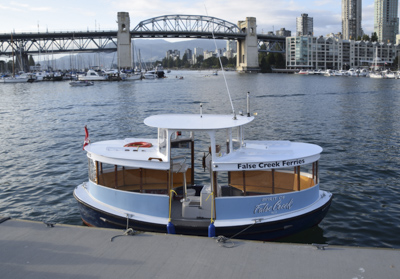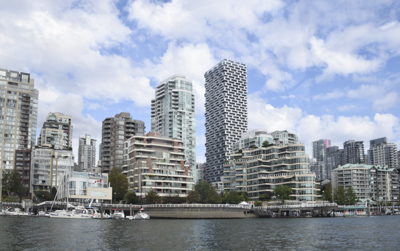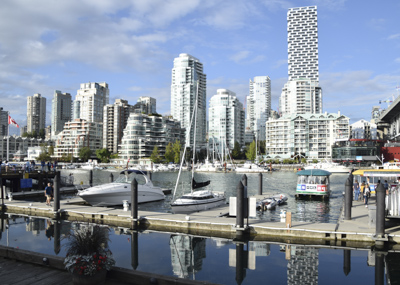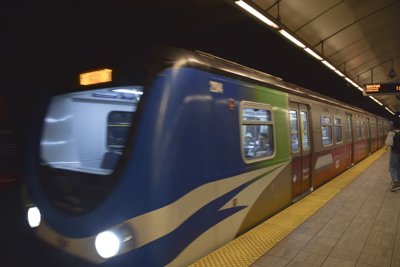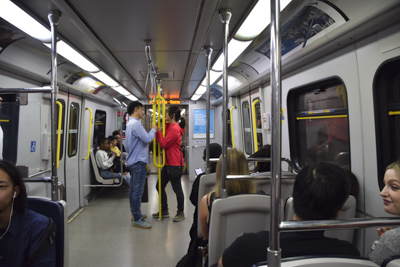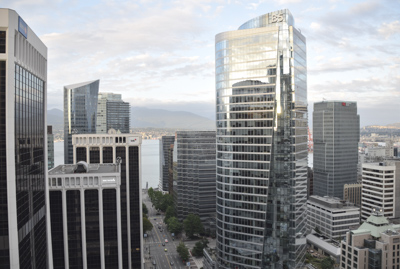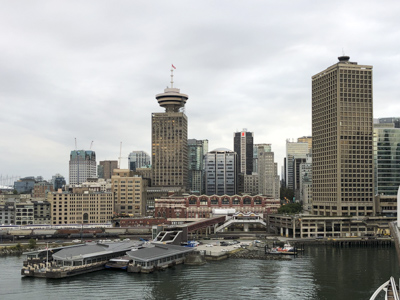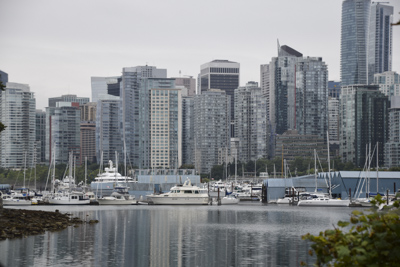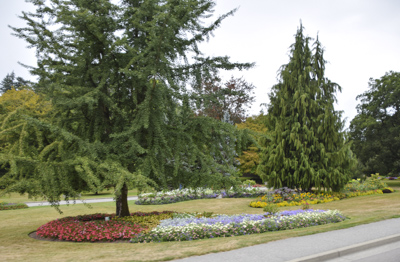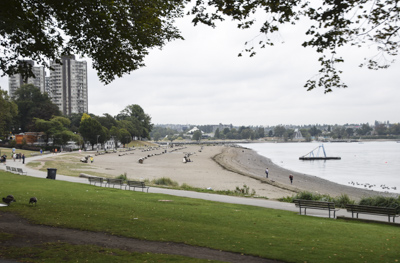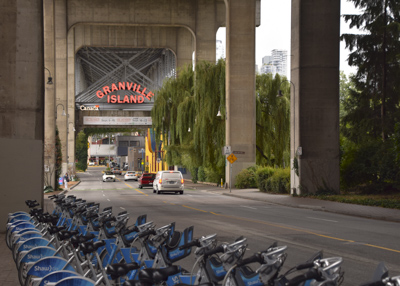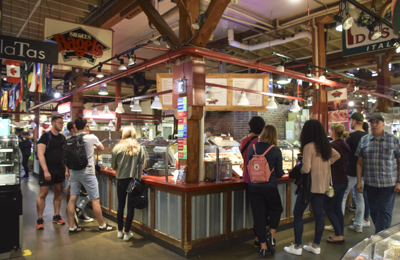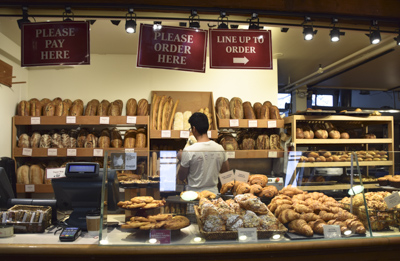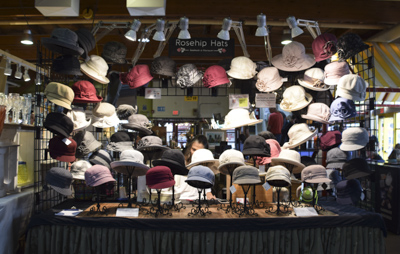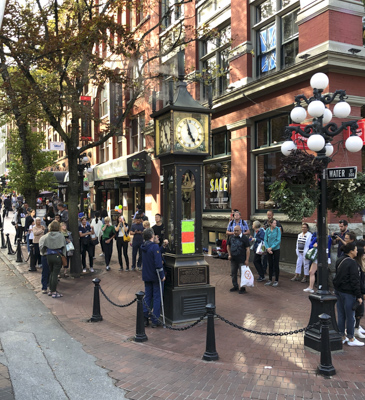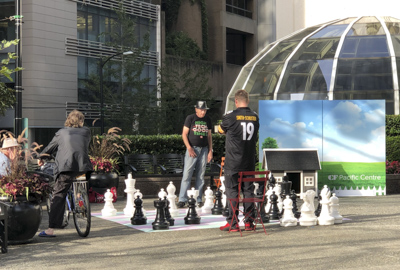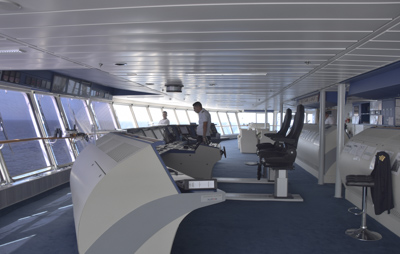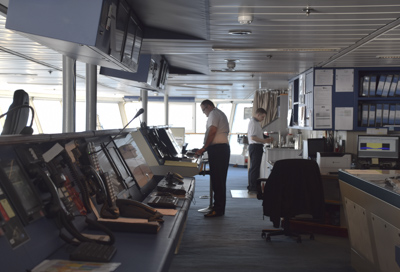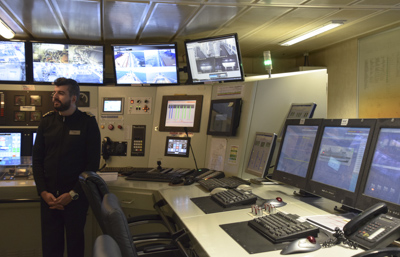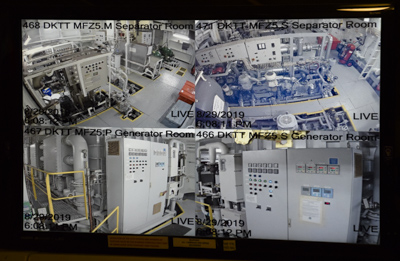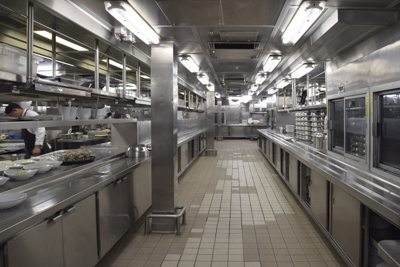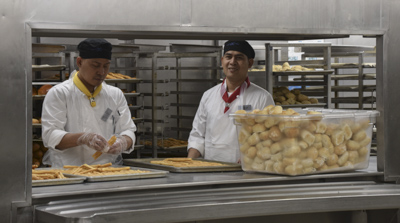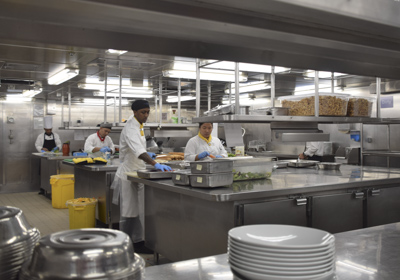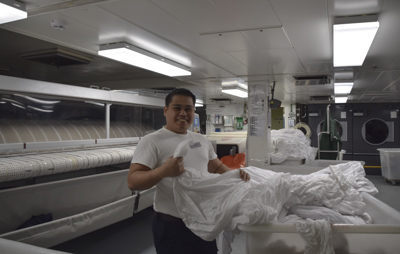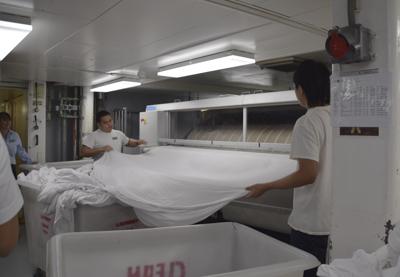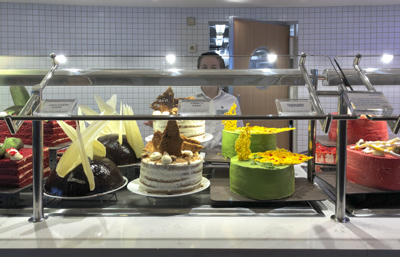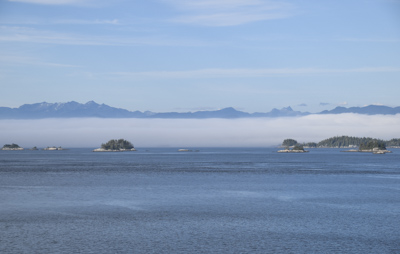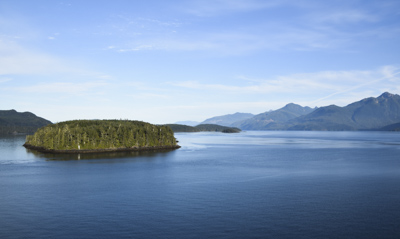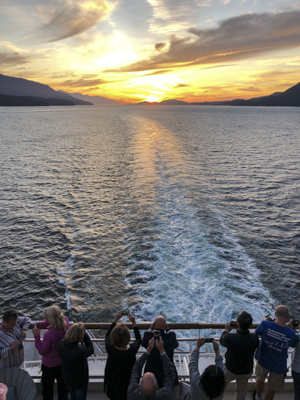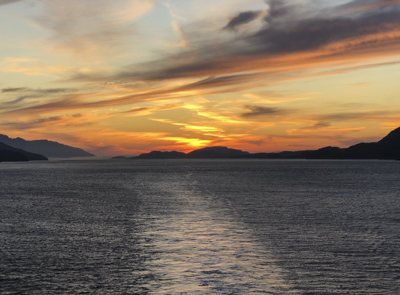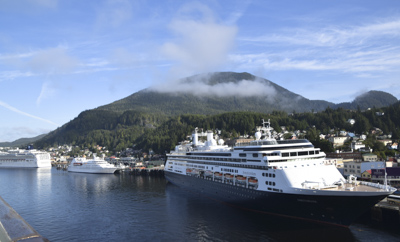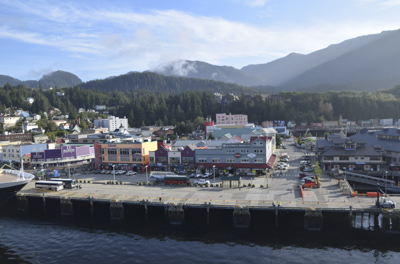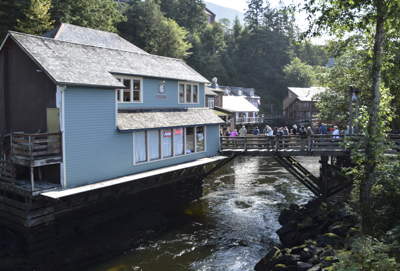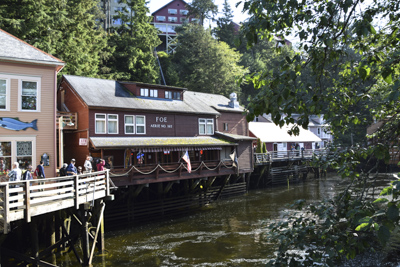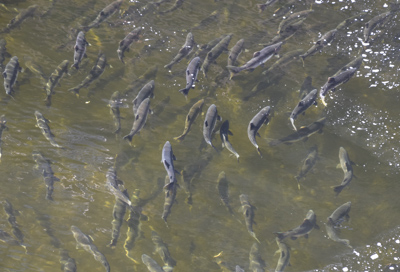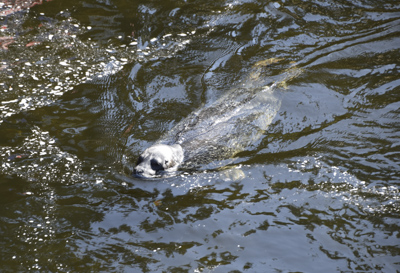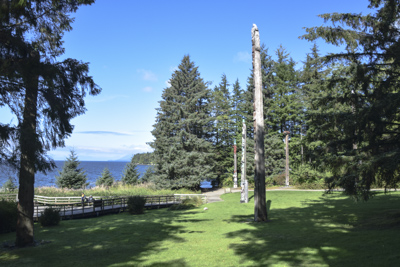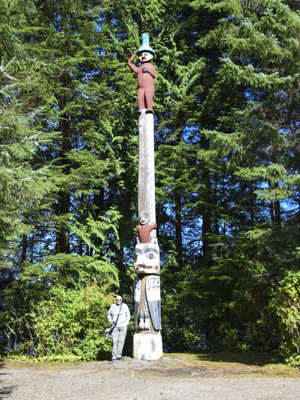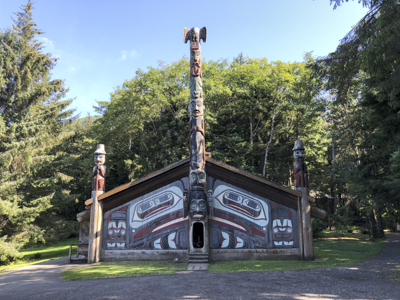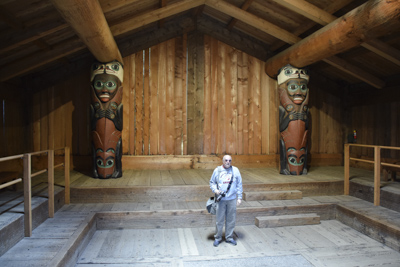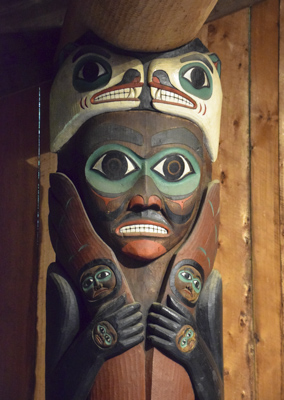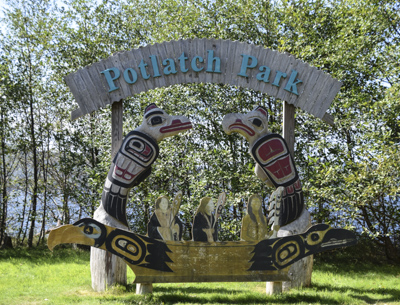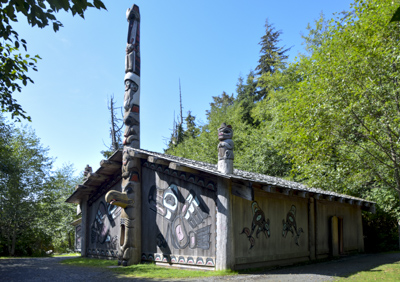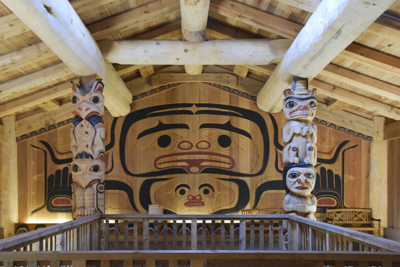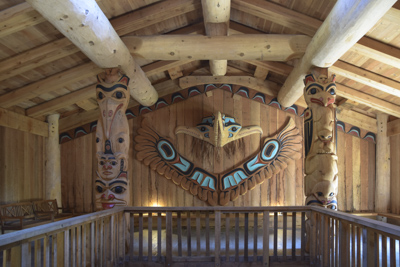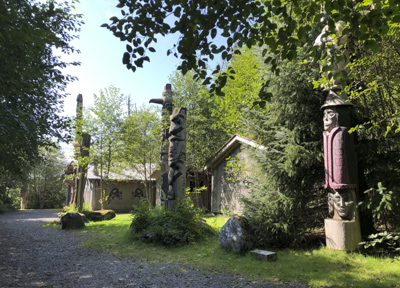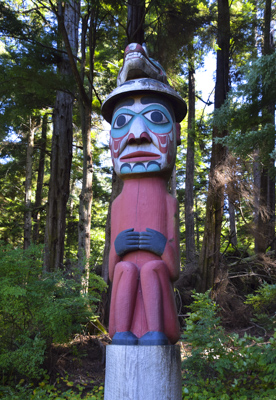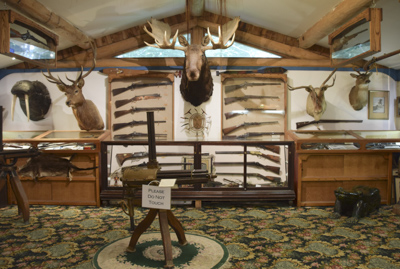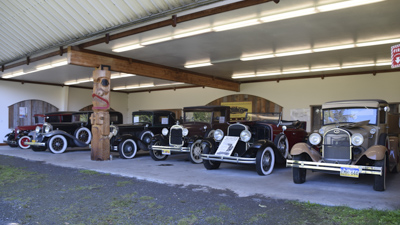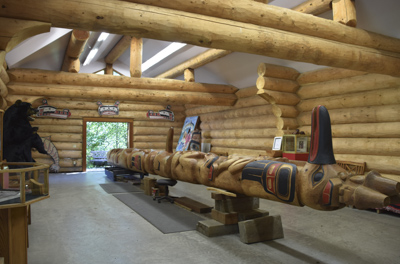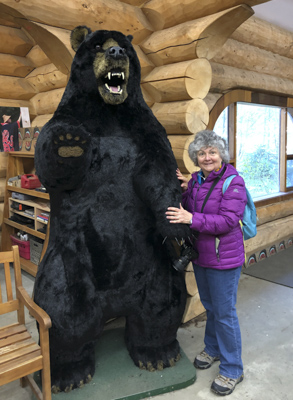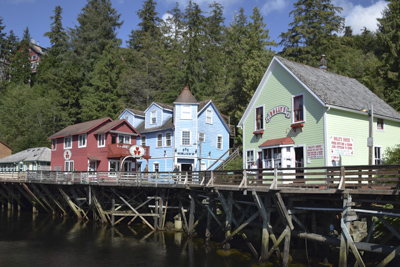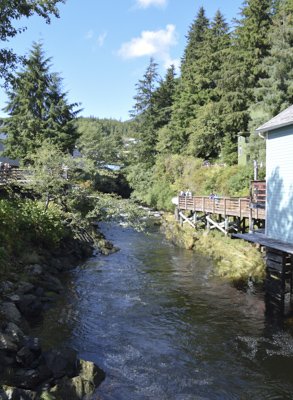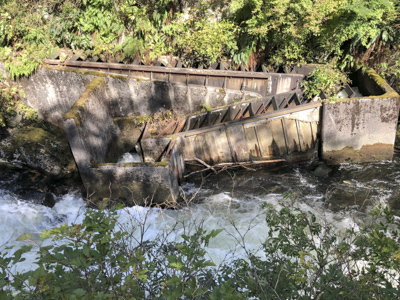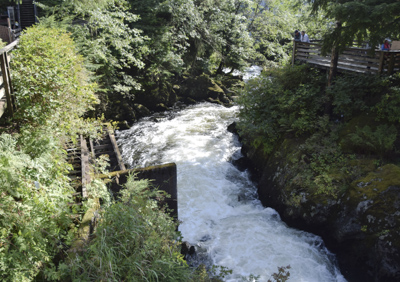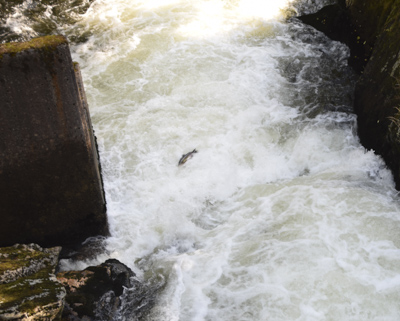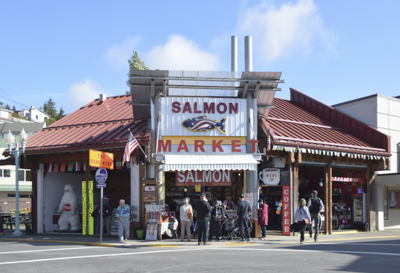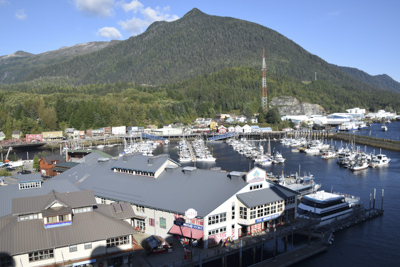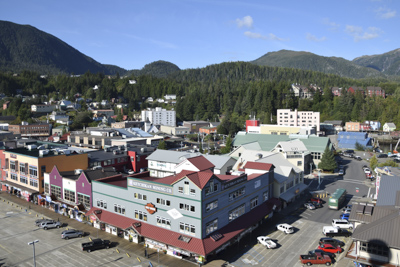September 1 – 4, 2019
Vancouver remains one of our favorite cities in the world. It’s an enjoyable city to visit and seems very livable: great public transportation, outdoors activities, mild year-round climate, multi-cultural population, friendly people, and many cultural events and activities. Did I mention incredibly beautiful?!! There are many parks and gorgeous view of the sea and mountains everywhere.

Sunday afternoon we took a taxi to Vanier Park to see a performance of Shakespeare’s Taming of the Shrew. It was performed by Bard on the Beach which is a professional summer theater group. This production was a very funny ‘Wild West’ cowboy version of the famous play and very enjoyable.
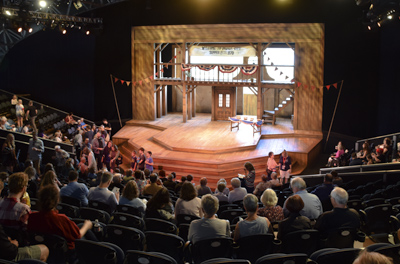
Before the performance, we sat on a bench near Kitsilano Beach and Jeff noticed a pink paper origami bird hanging in a tree. According to the label, someone travels the world and hangs origami from trees in public parks and posts locations on social media. The sign said: “It’s never too late to start again.”
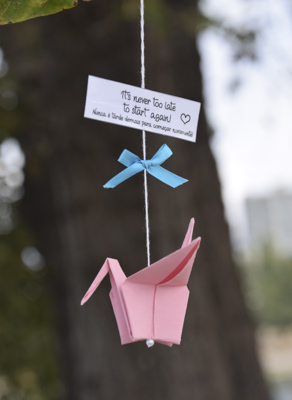
The little ferries on False Creek are practical and so much fun!
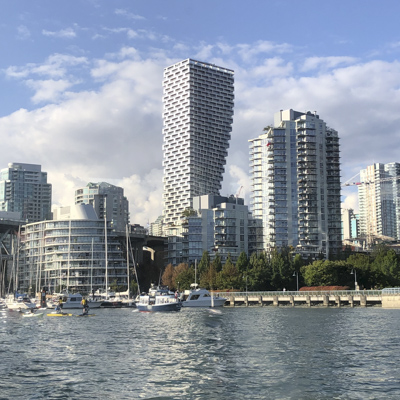
Canada Place on the waterfront is a convention center, hotel, meeting place, world trade center, and cruise ship terminal with great views across the bay to North Vancouver:
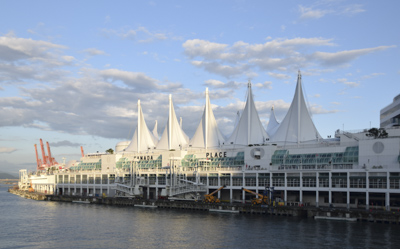
We took advantage of a beautiful sunny day to explore Stanley Park. The thousand acre park on the edge of downtown Vancouver remains densely forested. There are public beaches, trails, lakes, a heated pool, an aquarium, and an outdoor theater. We went to see the collection of totem poles:
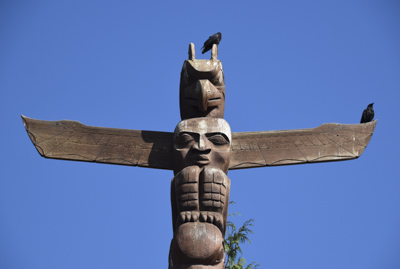
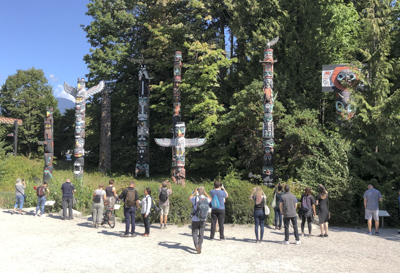
We enjoyed walking several miles along the outer walking/running/biking trail. There’s also a statue of a swimmer on a rock which reminded us of The Little Mermaid in Copenhagen.
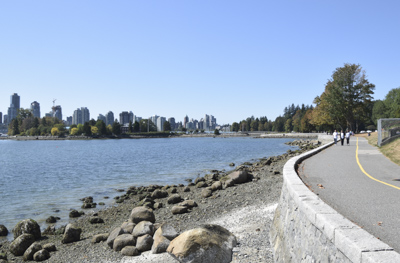


On another day, we visited Bill Reid’s Gallery of Northwest Coast Art. He was featured on the Canadian $20 banknote. The gallery also had several wonderful exhibits by contemporary indigenous artists.
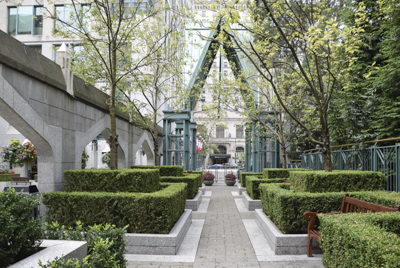
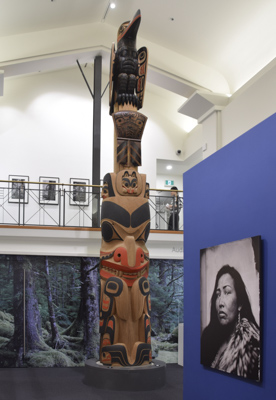
Downtown Vancouver in the glistening sunshine:
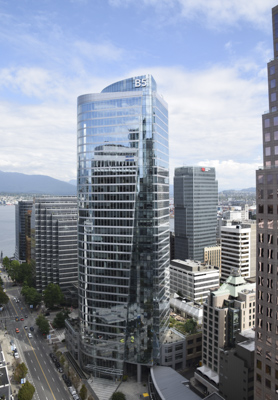
Our time in Vancouver passed quickly and we said goodbye to Vancouver early Wednesday morning. This trip home ended the same as it had begun, with a long delay at the Seattle airport. I took this photo from the plane of Mt. Ranier poking above the clouds, with Mount St. Helens in the background.
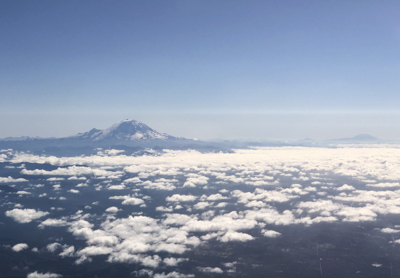
The view was a wonderful way to end a great adventure to Alaska and Vancouver.
